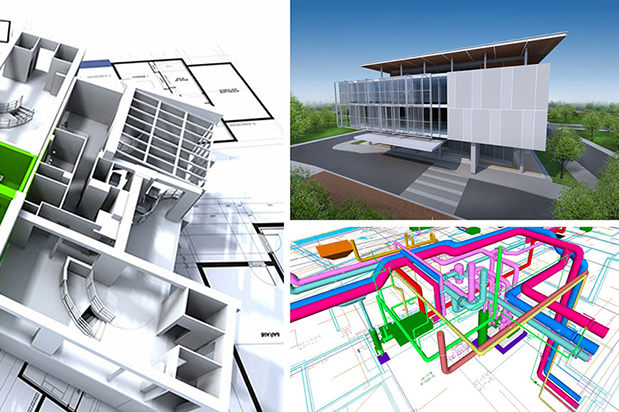BIM, Architecture and The Metaverse
Harnessing The Power of BIM: Architectural Firms and 3D Metaverse Developers
 In the industry of architectural design and 3D metaverse development, Building Information Modeling (BIM) emerges as a transformative force. Architectural firms and 3D metaverse developers alike are leveraging BIM to revolutionize their workflows, enhance collaboration, and elevate the quality of their projects. Architectural firms are experiencing a paradigm shift, thanks to the myriad benefits offered by BIM. This technology goes beyond traditional 2D design, providing a holistic and data-rich 3D model of a building. The advantages for architectural firms are multifaceted.
In the industry of architectural design and 3D metaverse development, Building Information Modeling (BIM) emerges as a transformative force. Architectural firms and 3D metaverse developers alike are leveraging BIM to revolutionize their workflows, enhance collaboration, and elevate the quality of their projects. Architectural firms are experiencing a paradigm shift, thanks to the myriad benefits offered by BIM. This technology goes beyond traditional 2D design, providing a holistic and data-rich 3D model of a building. The advantages for architectural firms are multifaceted.
Due to the unique formatting and efficiency that BIM format currently supports, BIM models fosters collaboration among architects, engineers, and other stakeholders. With a centralized and shared model, team members can seamlessly work together in real-time, reducing errors and improving overall efficiency. However, despite the benefits that BIM offers, including recent rendering updates, there is still no real-time collaboration platform on the market that supports BIM natively.
Data-Driven Decision-Making: BIM incorporates detailed information about every aspect of a building, from materials to construction schedules. This data-driven approach empowers architects to make informed decisions, optimize designs, and streamline project management. Through accurate simulations and clash detection features, BIM helps identify and resolve issues early in the design phase. This proactive approach minimizes costly errors during construction, ultimately saving both time and resources.
BIM and Rendering in the 3D Metaverse:
As the 3D metaverse continues to captivate audiences, developers are exploring innovative ways to integrate BIM and rendering technologies for immersive experiences: BIM models can be translated into formats that can support limited but captivating virtual tours within the 3D metaverse. Users can explore architectural designs in a virtual environment, gaining a more realistic sense of spatial relationships and design aesthetics.
Interactive Design Showcases: 3D metaverse platforms provide an interactive canvas for showcasing architectural designs. Developers can leverage BIM data to create dynamic and engaging presentations, allowing users to interact with elements of the building in real-time. The 3D metaverse serves as a collaborative space where architects, clients, and stakeholders can meet virtually to discuss and refine designs. BIM data ensures that everyone involved has access to the latest and most accurate information.
Real-Time Rendering: BIM-integrated real-time rendering engines allows the developer to either export into a supported format or with Unreal Engine, will convert the BIM format into a readily accessible model that can enhance the visual fidelity of architectural designs in the metaverse. This technology allows for high-quality, lifelike representations, bringing designs to life with unprecedented realism. However, it still has limitations in terms of interactivity and collaboration between developers and end users.
In conclusion, the synergy between BIM and 3D metaverse development is reshaping the landscape of architectural design and visualization. Architectural firms leveraging BIM are experiencing heightened efficiency and precision, while 3D metaverse developers are unlocking new dimensions of immersive experiences. Together, these technologies are propelling the industry toward unprecedented levels of creativity, collaboration, and innovation.